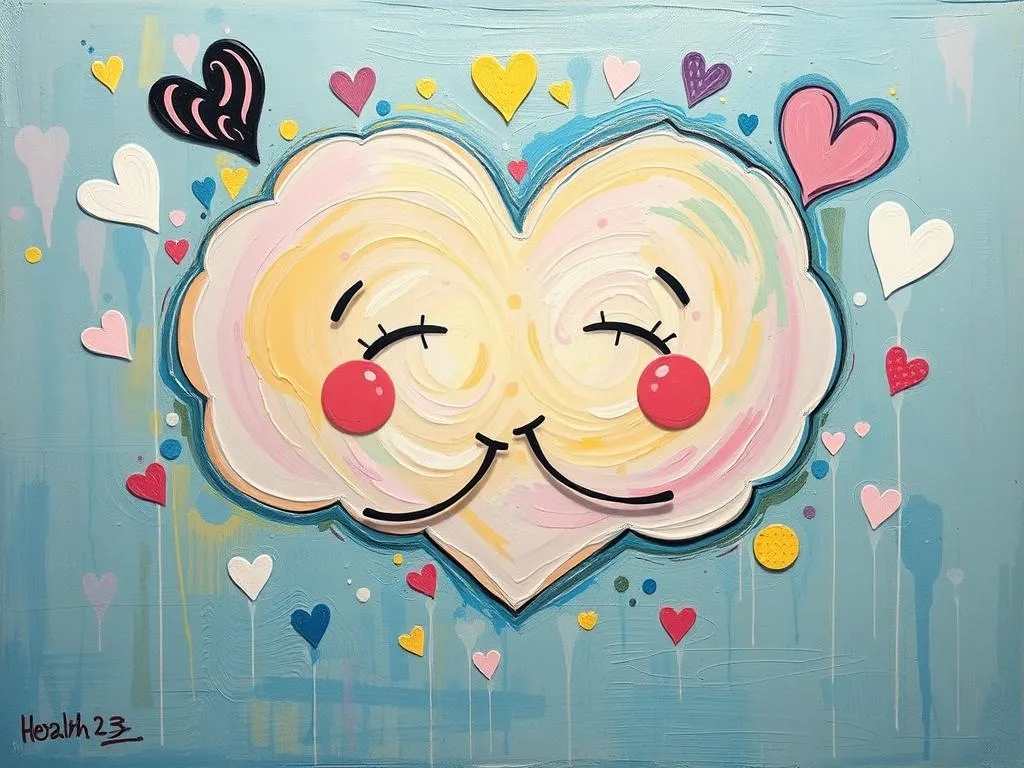
Have you ever found yourself waking up from a dream, your heart racing, emotions tangled in a web of joy, sorrow, or longing? Dreams often serve as a mirror, reflecting our deepest feelings and desires. They can be profound messages from our subconscious, urging us to explore the heartfelt emotions we may not fully acknowledge in our waking lives. So, what do these dreams mean? Let’s embark on a journey to unravel the symbolism behind heartfelt feelings in dreams and discover how they can guide us toward emotional clarity and growth.
As we delve into this intriguing topic, it’s essential to understand that dreams are deeply personal and can be interpreted in various ways. Different cultures and psychological frameworks offer unique insights into the emotional tapestry woven into our dreams. By blending these perspectives, we can enrich our understanding of our heartfelt feelings and learn how to harness their power for personal growth.
Heartstrings: The Language of Emotion in Dreams
In the realm of dreams, symbols often act as the language of our subconscious, expressing emotions that may be difficult to articulate in our waking lives. When we dream of heartfelt feelings, we might encounter symbols such as hearts, tears, or embraces. Each of these symbols can carry a wealth of meaning, influenced by cultural beliefs and psychological interpretations.
The Heart: A Universal Symbol of Love
At the center of our emotional landscape lies the heart, a symbol that transcends cultures and speaks to the essence of human connection. In dreams, a heart can represent romantic love, friendship, or even self-love. For instance, dreaming of a heart beating strongly might signify passion and vitality, while a broken heart could indicate feelings of loss or heartache. Understanding the context of the heart’s appearance in your dream is crucial for interpreting its significance.
Tears: The Waters of Emotion
Tears in dreams can be incredibly powerful symbols, often representing deep-seated grief, regret, or healing. Dreaming of crying can reflect a release of pent-up emotions that you might be struggling to express in your waking life. Alternatively, tears of joy can symbolize a significant breakthrough or relief from stress. This duality highlights how tears can both signify pain and pave the way for emotional healing.
Embraces: The Power of Connection
An embrace in a dream can symbolize comfort, connection, or even a desire for intimacy. When you dream of hugging someone, it may reflect your longing for closeness or the need for support during challenging times. Conversely, if the embrace feels suffocating or uncomfortable, it may indicate boundaries that need to be established or emotional ties that are weighing you down.
Cultural Perspectives on Emotion
Different cultures have unique interpretations of dreams and the emotions they convey. For instance, in many Indigenous cultures, dreams are viewed as a way to connect with the spiritual realm, often providing guidance on emotional matters. In contrast, Western psychology tends to focus on the personal significance of emotions in dreams, emphasizing the therapeutic potential of understanding and processing these feelings.
Heartfelt Journeys: Scenarios of Emotion in Dreams
To illustrate the rich tapestry of heartfelt feelings experienced in dreams, let’s explore several scenarios that highlight various emotional landscapes and their potential meanings.
Scenario 1: The Lost Love
Imagine dreaming of an ex-partner, where you find yourself reliving moments of joy and sorrow. You wake up feeling a mix of nostalgia and sadness. This dream could indicate that you are still processing unresolved feelings about the relationship. It might encourage you to explore whether you’ve truly moved on or if there are lessons to be learned from that chapter of your life.
Scenario 2: The Heartfelt Farewell
In another dream, you might experience a poignant farewell with a loved one who has passed away. The dream is filled with warmth, love, and a sense of closure. This scenario reflects your desire to honor their memory and perhaps suggests that you are ready to embrace a new phase in your life, carrying their love with you as you move forward.
Scenario 3: The Embrace of a Stranger
Picture a dream where you share a comforting embrace with a stranger. This unexpected connection can symbolize your yearning for human connection and the importance of opening your heart to others. It might be an invitation to seek new friendships or emotional experiences that can enrich your life.
Scenario 4: The Tears of Release
Consider a dream in which you find yourself crying uncontrollably in a safe space. This scenario emphasizes the need for emotional release and healing. It may suggest that you have been bottling up feelings that require acknowledgment and expression, urging you to find healthy outlets for your emotions in your waking life.
Scenario 5: The Heart of Self-Love
Lastly, envision a dream where you are surrounded by mirrors reflecting your image, and you feel an overwhelming sense of self-love. This dream serves as a powerful reminder of the importance of nurturing your relationship with yourself. It encourages you to embrace your worth and recognize that heartfelt feelings toward oneself are essential for overall well-being.
The Heart’s Path: Navigating Your Emotional Landscape
As we explore the intricate connections between heartfelt feelings and dreams, it becomes clear that these experiences can serve as valuable tools for personal growth. By examining the emotions and symbols within our dreams, we can embark on a journey of self-discovery that leads to deeper emotional understanding.
Acknowledging Your Emotions
The first step toward harnessing the wisdom of your dreams is to acknowledge your emotions. Take time to reflect on your feelings as they arise in dreams and how they relate to your waking life. Journaling can be a powerful way to capture these insights and track patterns over time. By becoming attuned to your emotional landscape, you can better navigate the challenges and joys that life presents.
Embracing Vulnerability
Dreams often reveal our vulnerabilities, urging us to confront the feelings we may shy away from in our daily lives. Embrace this vulnerability as a source of strength rather than weakness. Opening up about your emotions—whether with friends, family, or a therapist—can create a support network that fosters healing and growth.
Setting Intentions
As you explore your dreams, consider setting intentions for your personal journey. Ask yourself what you hope to achieve emotionally and how your dreams can guide you toward that goal. This could mean cultivating self-love, forgiving past grievances, or seeking new connections. Setting clear intentions can help you align your waking actions with the insights gained from your dreams.
Cultivating Mindfulness
Incorporating mindfulness practices into your daily routine can enhance your connection to your dreams and emotions. Practicing meditation or mindfulness exercises can help you become more aware of your feelings, allowing you to process them in a healthier way. By fostering mindfulness, you create space for your emotions to be acknowledged and integrated into your life.
Seeking Professional Support
Finally, don’t hesitate to seek professional support when navigating complex emotional landscapes. Therapists or counselors can provide valuable guidance and tools for interpreting your feelings and dreams. They can help you uncover deeper layers of meaning and assist you in developing healthier coping strategies.
As you reflect on the heartfelt feelings that surface in your dreams, consider how they mirror your waking life. Dreams are not merely fleeting images; they are profound messages from within, urging you to embrace your emotions with compassion and understanding. By nurturing your relationship with your feelings, you can embark on a transformative journey of self-discovery and healing.
In the end, remember that your dreams are a canvas painted with the colors of your heart. Embrace them, learn from them, and let them guide you toward a deeper understanding of your emotional self. After all, the journey inward is one of the most rewarding paths you can take.







